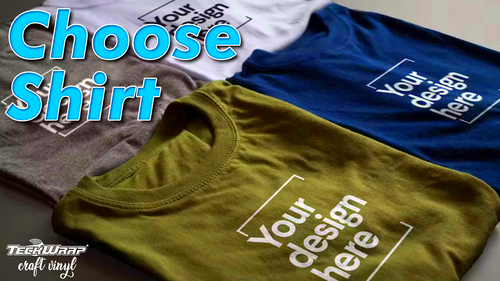A great method to express your creativity and uniqueness is by customizing shirts and fabrics with
images. Understanding how to add
images to fabric is essential, whether you want unique gifts, to promote a brand or create custom-made merchandise. Artistic expression is one of the factors behind this process, and it also helps in enhancing the aesthetic value of clothing and textile products.
Understanding the Types of Fabrics Suitable for Custom Images

It is of great importance to choose the correct material during graphic design. Requirements for personalization involve an assortment of materials outlined below:
- Cotton: Soft and breathable, cotton is a popular choice for t-shirts and casual wear.
- Polyester: This fabric is durable and holds colors well, making it ideal for vibrant designs.
- Blends: Cotton-polyester blends combine the best of both worlds, offering comfort and color retention.
- Linen: Great for summer apparel, linen has a unique texture that can enhance printed designs.
- Canvas: Often used for bags and shoes, canvas is thick and sturdy, perfect for bold graphics.
When selecting the right type of textile to use for your experiment, you should factor in its touch, longevity and expected purpose.
Exploring Different Methods for Printing Images on Fabric

You can call it several techniques, as these are the ones that will palce their advantages in a manner that you understand them quicker. Here are quick and concise descriptions of the commonest means:
| Printing Method | Description | Best For |
|---|
| Screen Printing | Involves pushing ink through a stencil on a mesh screen. | Bulk orders and vibrant colors |
| Heat Transfer | Uses heat to transfer a printed image onto fabric. | Small orders and detailed designs |
| Sublimation | Ink turns into gas and embeds into the fabric. | Polyester fabrics and all-over prints |
| Direct-to-Garment (DTG) | Prints directly onto the fabric using inkjet technology. | Highly detailed images and custom designs |
Important considerations exist for your project before deciding on any of the techniques due to their various advantages. When recognizing costs and image quality that accompany various processes, you will be able to select what is suitable for your specific shirt or fabric objectives.
Common Mistakes to Avoid When Adding Images on Shirts
It's really typical for individuals ordering custom made shirts and fabrics to make some mistakes that may affect the finished item. Below are several pitfalls that you need to avoid:
- Neglecting Image Quality: Using low-resolution images can result in blurry or pixelated prints. Always ensure your images are at least 300 DPI for the best clarity.
- Ignoring Fabric Type: Not all printing methods work on every fabric. For example, sublimation only works on polyester. Know your fabric to choose the right technique.
- Overloading Your Design: While it’s tempting to include lots of details, too much complexity can overwhelm the viewer. Aim for a clean, simple design that conveys your message effectively.
- Skipping Color Tests: Colors can look different when printed on fabric compared to on-screen. Always do a test print to see how the colors translate.
- Forgetting About Placement: The position of your design matters. Ensure it’s well-placed and appropriately sized for the shirt style.
- Not Following Care Instructions: Custom prints require special care. Failing to inform users about washing and drying instructions can lead to faded designs.
Whenever avoid these common errors, they will help you design remarkable custom shirts that are distinguishable and durable.
Frequently Asked Questions about Custom Images on Fabric
Are you interested in customizing
images on fabric? Here are a few commonly asked questions that might be helpful:
What is the best fabric for printing images?
Choosing between cotton and polyester is like choosing between the best of both worlds. In other words, cotton’s natural feel captivates many while polyester retains its vivid hue beyond compare. The best fabric options are when they are blended!
Can I use any image for printing?
Nonetheless, to avoid pixelisation it is important that all what you do here should be in a high resolution (not less than 300 DPI). Besides, it is good if you put the
images right, say: PNG or PDF.
How do I choose the right printing method?
Some important elements that you should think about are shirt volumes, complexity of designs, and fabric kinds. Whereas DTG is more suited for intricate designs, screen printing is perfect for large scale productions.
Will the prints fade over time?
If you answer right, your prints will last for a lifetime. Hence to maintain the image, care in washing and drying is necessary.
Can I customize any type of clothing?
You could personalize your t-shirts, hoodies, bags and the like. Just see to it that the material can hold the printing process you are planning on using.
Conclusion and Final Thoughts on Customizing Your Shirts
Although customizing shirts and fabric may not seem like an engaging creative pursuit, it plays a fantastic role in showing your personality, advertising your merchandise or manufacturing one-of-a-kind presents. Knowing different fabrics used, printing methods available as well as design procedures guarantees that the outcome of any customization meets one’s expectations.Do not forget about common mistakes avoidance, proper methods selection and the design maintenance. When you’re creating personalized t-shirts for an occasion or launching a mini business, watching your designs taking shape is certainly gratifying. Therefore, make sure to compile all of your ideas and develop their orientation.
 It is of great importance to choose the correct material during graphic design. Requirements for personalization involve an assortment of materials outlined below:
It is of great importance to choose the correct material during graphic design. Requirements for personalization involve an assortment of materials outlined below: You can call it several techniques, as these are the ones that will palce their advantages in a manner that you understand them quicker. Here are quick and concise descriptions of the commonest means:
You can call it several techniques, as these are the ones that will palce their advantages in a manner that you understand them quicker. Here are quick and concise descriptions of the commonest means:
 admin
admin








